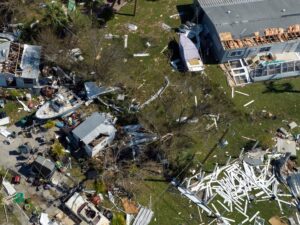October 14, 2025
The insurance industry is facing a new kind of skill gap: one that goes beyond technical expertise and touches how we care for clients, collaborate as teams and build sustainable careers. It’s about skills that come from the heart, not from the brain.
At a recent conference, Ian Bell, Senior Vice President of Global Talent Management at Sedgwick, joined a panel to discuss what it really means to “level up” in insurance today. The conversation quickly shifted from traditional concerns about retiring experts and technical know-how to a deeper exploration of soft skills, leadership and culture.
The evolving definition of skill gaps
For years, closing the insurance skill gap was seen as a matter of transferring technical knowledge from seasoned professionals to the next generation. But as Ian Bell observed, the challenge is also cultivating the soft skills such as empathy, communication and adaptability that drive success at both individual and organizational levels. Ian noted that these skills have always been important, but many companies are only now realizing what happens when they’re missing.
Why soft skills matter more than ever
Ian perfectly summed up the necessity of soft skills with his now-famous “Big Mac” analogy. If you craft the perfect Big Mac, but you throw it at the customer, that’s all they’ll remember. Not the workmanship, not the quality, the experience.
In insurance, technical excellence is essential, but it’s how we deliver decisions and interact with clients and colleagues that leaves a lasting impression. A technically perfect claim decision, delivered without empathy or clarity, can damage trust and reputation far more than a minor error handled with care. Ian even notes that delivering negative news, when done with tact and genuine care for the recipient, can yield positive results.
Making best practice standard practice — internally and externally
At Sedgwick, Ian’s approach is to identify best practices in soft skills and make them standard through training and leadership development. This means looking beyond the words on a wall such as integrity, honesty and inclusivity, and asking:
- How do we demonstrate these values when we are at our best?
- What do people see and feel when our teams are truly thriving?
By capturing and sharing these moments, Sedgwick aims to make “doing well everywhere what we do well somewhere.”
Creating meaningful employee experiences
What keeps insurance and risk professionals engaged and resilient is not just perks or recognition. It is meaningful work, opportunities to learn and the psychological safety to make mistakes and grow.
Ian emphasizes the importance of leaders creating environments where people feel valued, empowered and able to move within the organization. The things that keep you in a job are the meaning you get from your work, the chances to learn and the opportunity to do the right thing for the customer, even if it means responsibly bending the process.
Rethinking recruitment and development
Attitude and behavior, Ian argues, are harder to change than skills or knowledge. That is why recruiting for mindset and values, and then teaching the technical skills, is a more sustainable strategy. An Insurance Business article which also highlighted the conference panel, echoes this, urging the industry to broaden recruitment beyond traditional backgrounds and to seek out candidates from hospitality, sports and other fields where collaboration and adaptability are second nature.
Recognizing and rewarding soft skills
The traits valued in insurance leadership are shifting. Where once boldness and directness were prized, today’s leaders are also recognized for kindness, empathy and flexibility. Ian points out that the most effective leaders know when to lead from the front, walk alongside their teams or support from behind. Organizations that reward these behaviors, not just technical performance, build cultures of trust and resilience.
Investing in upskilling and continuous learning
Sedgwick’s commitment to ongoing development is clear. Millions are invested annually in continuing education and recognition programs. Every colleague has access to resources for external courses and qualifications, supporting both technical and personal growth. This investment is not just about career longevity it’s about building a workforce that can adapt and thrive as the industry evolves.
Actionable strategies for leaders and organizations
So, how can insurance leaders close the skill gap and build future-ready teams?
- Begin to prioritize soft skills in hiring, training and recognition.
- Foster environments where best practices are shared and standardized.
- Invest in ongoing learning and development for all employees.
- Encourage job mobility and psychological safety.
- Broaden recruitment to include diverse backgrounds and skill sets.
Conclusion
Closing the insurance skill gap is about more than technical expertise. It is about building a culture where people thrive, clients feel valued and teams are equipped to meet the challenges of tomorrow. As Ian Bell and other industry leaders remind us, leveling up means putting people first, every step of the way. This is how we all continue to thrive.



